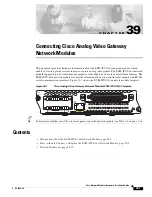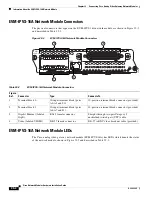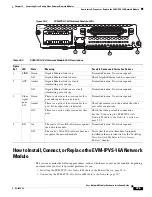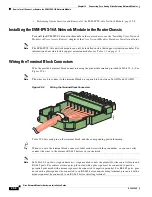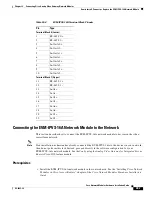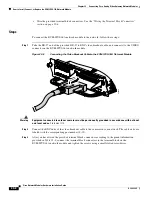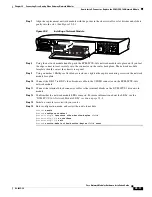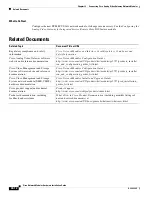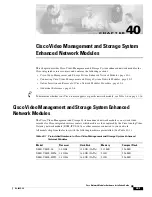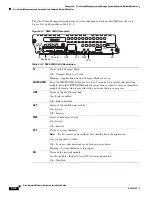
40-3
Cisco Network Modules Hardware Installation Guide
OL-2485-20
Chapter 40 Cisco Video Management and Storage System Enhanced Network Modules
Connecting Cisco Video Management and Storage System Network Modules
Shutting Down Cisco Video Management and Storage System Enhanced
Network Modules
Press the SHUTDOWN button on the network module faceplate for less than 2 seconds to perform a
graceful shutdown of the network module before removing power from the router or before starting an
online insertion and removal (OIR) sequence on the router. The application may take up to 2 minutes to
fully shut down.
Caution
If you press the SHUTDOWN button for
more than 4 seconds
, a nongraceful shutdown of the hard disk
will occur and may corrupt files on the network module’s hard disk. After a nongraceful shutdown, the
HD and SYS LEDs remain lit. Press the SHUTDOWN button for
less than 2 seconds
to gracefully reboot
the network module.
Connecting Cisco Video Management and Storage System
Network Modules
To connect Cisco Video Management and Storage System network modules to an external device, use a
straight-through two-pair Category 5e unshielded twisted-pair (UTP) cable, and connect the RJ-45
Gigabit Ethernet port on the network module to a switch, hub, repeater, server, or other Gigabit Ethernet
network device.
Note
RJ-45 cables are not available from Cisco. These cables are widely available and must be Category 5e
cables.
Connecting to an External Storage Device using iSCSI
The Cisco Video Management and Storage System enhanced network module supports an Internet SCSI
(iSCSI) connection to an external storage device. The Gigabit Ethernet port on the faceplate of the
network module and the Gigabit Ethernet port on the router can be configured as iSCSI connections.
To connect Cisco Video Management and Storage System enhanced network modules to an external
storage device using iSCSI, use a straight-through two-pair Category 5e unshielded twisted-pair (UTP)
cable.
Note
RJ-45 cables are not available from Cisco. These cables are widely available and must be Category 5e
cables.
For details about configuring iSCSI connections, see the TBD (software document) on Cisco.com:
TBD

